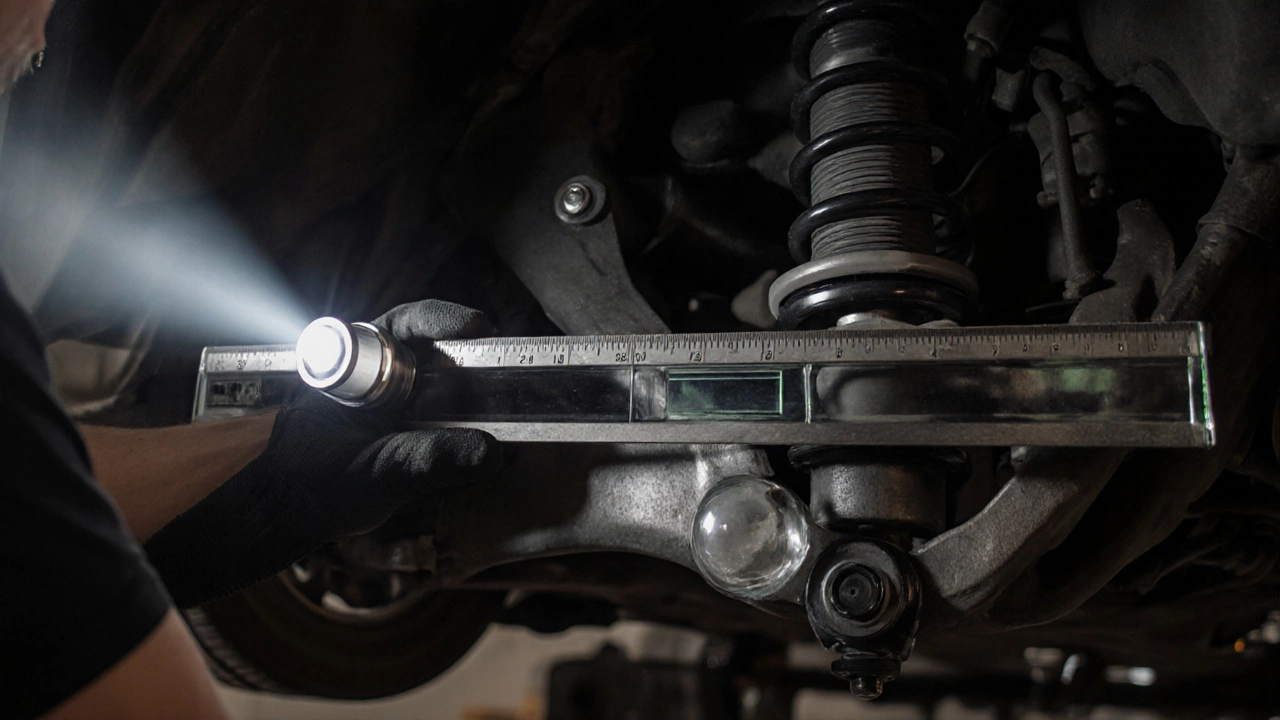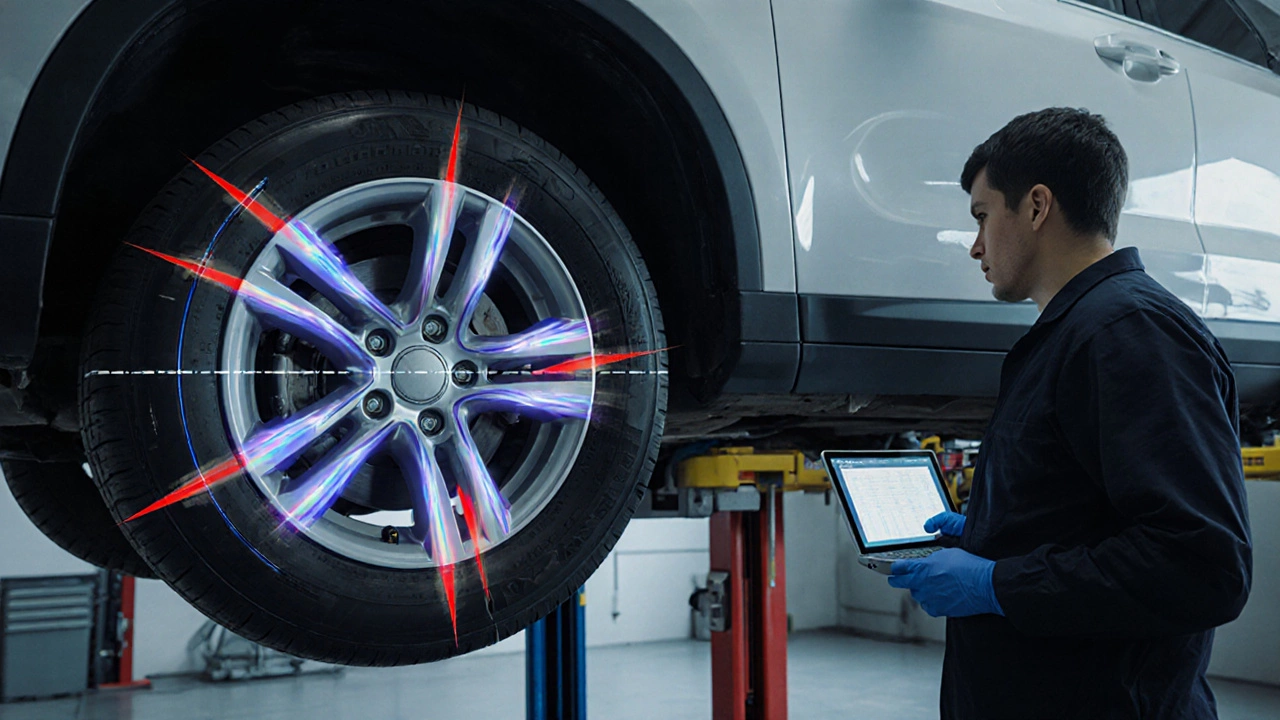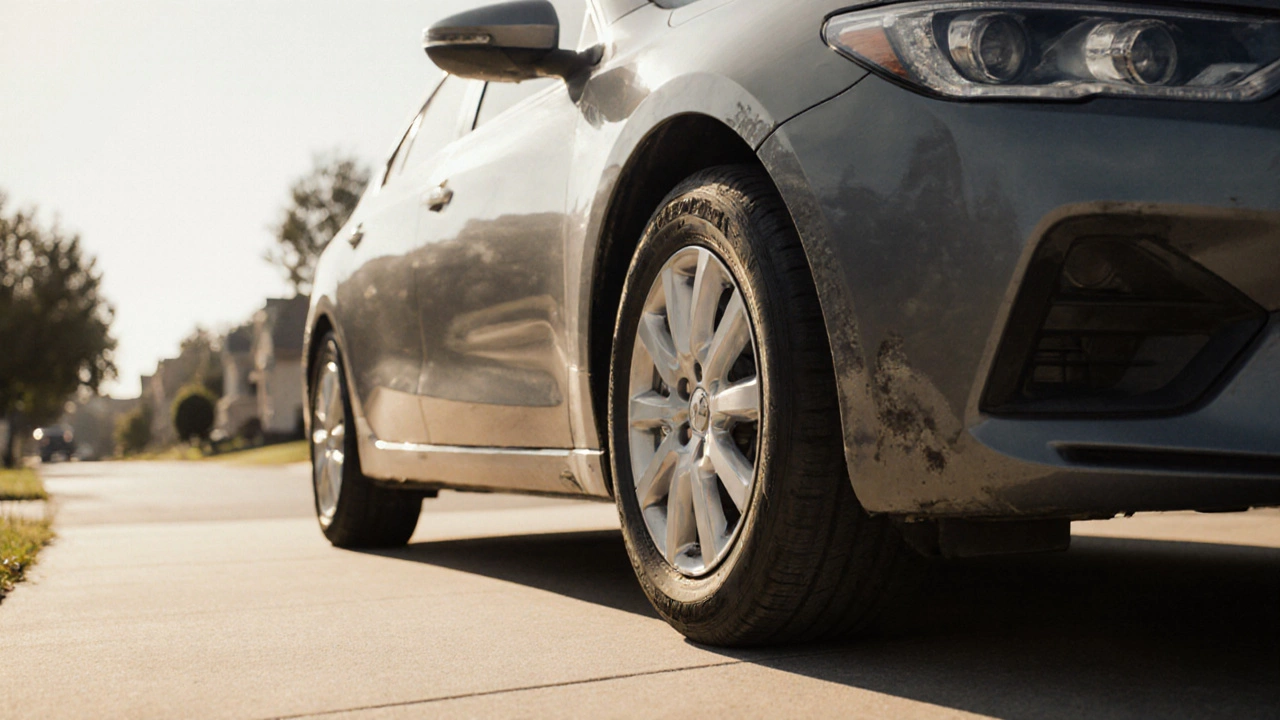Suspension Bend Diagnostic Tool
Suspension Bend Diagnostic Tool
This tool helps you determine if your car's suspension might be bent based on measurements from the visual inspection checklist in the article.
Ride Height Measurement
Straightedge Test
Bubble Level Test
Diagnosis Results
Enter your measurements and click "Calculate Diagnosis" to see results.
Suspension is the system of springs, shock absorbers, and linkages that connects a vehicle’s wheels to its frame and controls ride quality. When a part of that system gets bent, the car starts behaving oddly, but most drivers don’t know what to look for. This guide shows you how to spot a bent suspension, what tools you need, and when it’s time to call a professional.
Quick Takeaways
- Visible dents, uneven tire wear, and pulling to one side are classic signs of a bent suspension.
- Use a jack, a straightedge, and a bubble level for a cheap but reliable inspection.
- The most common bent components are control arms, struts, and steering knuckles.
- If you notice vibration at highway speeds or the car drifts after a turn, have a shop check the alignment.
- Professional diagnostics are worth it when structural damage is suspected.
What "Bent" Really Means
A suspension component is “bent” when it deviates from its factory‑specified geometry. That bend can be caused by hitting a curb, a pothole, or a low‑speed collision. The result is a change in angles that affects toe, camber, and caster settings, leading to handling quirks.
Key Parts That Can Bend
The following parts are most likely to suffer a bend:
- Control arm - connects the wheel hub to the chassis; a dent here throws off camber.
- Strut - combines a shock absorber with a coil spring; a twisted strut can cause uneven ride height.
- Steering knuckle - holds the wheel hub and attaches to the control arm; a bent knuckle leads to steering pull.
- Ball joint - allows the control arm to pivot; damage often feels like a clunk.
- Sway bar link - stabilises the car in corners; a bent link creates leaning during turns.
Visual Inspection Checklist
- Park the car on a flat surface and engage the parking brake.
- Look at each wheel rim from the front and rear. Any wobble or mis‑alignment of the rims is a red flag.
- Inspect the tire tread. Uneven wear patterns (more wear on the inner or outer edge) often hint at a bent control arm.
- Check the underside of the vehicle. Use a flashlight to spot obvious dents or bends on the control arms, struts, and knuckles.
- Measure ride height on both sides with a tape measure. A difference of more than 10mm usually means a suspension geometry issue.

Using Simple Tools for a More Accurate Test
You don’t need a pricey lift. A good set of basic tools can give you a reliable answer.
| Tool | How to Use | What It Shows |
|---|---|---|
| Jack + Jack Stands | Lift each corner one at a time, then lower gently. | Listen for clunks that indicate a bent or loose component. |
| Straightedge (Metal ruler) | Place across the lower control arm while the wheel is off the ground. | Gaps >2mm mean the arm is twisted. |
| Bubble Level | Lay across the strut or sway bar link. | Detects tilt that points to bent hardware. |
| Measuring Tape | Compare front‑to‑rear ride heights. | Highlights uneven suspension geometry. |
Step‑by‑Step Bent‑Suspension Test
- Raise the front left wheel with a jack and secure it on jack stands.
- With the wheel hanging, place a straightedge along the length of the lower control arm. If there’s a visible gap, note it.
- Lay a bubble level on top of the strut. Record any tilt.
- Zero tilt = OK.
- Tilt >1° = possible bend.
- Lower the wheel, roll the car forward a few meters, and then repeat the test on the opposite side.
- Drive the car at 50mph on a straight road. Feel for vibration that worsens when you lightly tap the steering wheel. Vibration that matches the steering input often points to a bent knuckle.
Common Mistakes That Mimic a Bent Suspension
Not every weird feeling means a bent part. Here’s what else to rule out:
- Worn bushings - cause squeaks and slight mis‑alignment but usually feel softer.
- Uneven tire pressure - leads to pulling but is easy to fix.
- Damaged wheel rim - creates vibration at specific speeds.
- Loose tie‑rod ends - produce steering play, not permanent geometry changes.

When to Call a Professional
If any of the following are true, stop DIY and head to a garage:
- You see a clear bend or crack on a control arm, strut, or knuckle.
- The car pulls hard to one side even after a wheel alignment.
- Ride height differs by more than 15mm after swapping tires.
- After a high‑speed impact, the steering feels loose.
Professional shops have frame‑straightening equipment and can re‑measure camber, caster, and toe with precision.
Aligning After a Bend Repair
Once you replace or straighten a bent component, a proper wheel alignment is mandatory. Alignment resets camber, caster, and toe to factory specs, ensuring even tire wear and safe handling.
FAQ - Bent Suspension Diagnostics
Frequently Asked Questions
How can I tell if a control arm is bent without lifting the car?
Look for uneven tire wear on the inner or outer edges and feel for a pulling sensation when you let off the accelerator. If the car drifts consistently to one side, the lower control arm is a prime suspect.
Will a bent strut affect my car’s height?
Yes. A twisted or bent strut can compress unevenly, causing one corner of the vehicle to sit lower. Measure ride height on both sides to confirm.
Can I replace a bent steering knuckle myself?
Technically you can, but it requires a press, proper torque specs, and safety precautions. Most DIYers prefer to have a professional do it to avoid mis‑alignment.
Is a bent suspension covered by car insurance?
If the bend resulted from a collision or hitting a curb, a comprehensive policy may cover it. Pure wear‑and‑tear is usually excluded.
What’s the cost of fixing a bent suspension?
Prices vary: a bent control arm replacement can run £200‑£500 including labor, while a straightening service for a knuckle might be £300‑£600. Get quotes from at least two garages.

